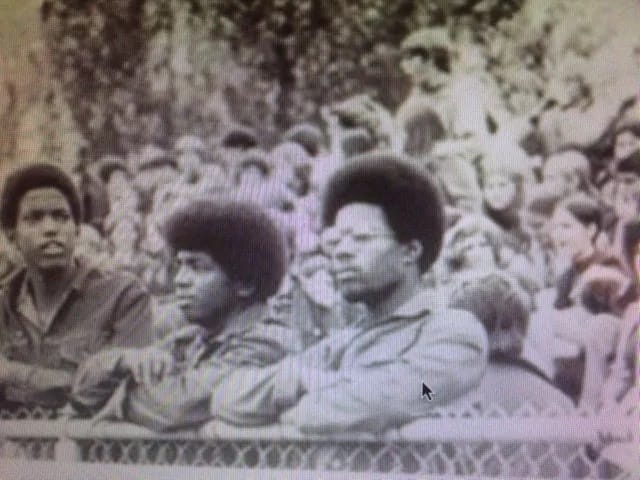- BLACKVOTER.ORG
- Posts
- BlackVoter.Org
BlackVoter.Org


State Rep. Jolanda Jones has officially thrown her hat into the ring for Texas' 18th Congressional District, recently vacated by the late U.
S. Rep.
Sylvester Turner. With her announcement, the candidate field swells to at least 20, dramatically increasing the odds of a runoff in December should no one achieve a majority on November 4.
Jones, a seasoned political figure, has pledged to advocate for families and combat issues like Medicaid cuts, emphasizing her experience across various political roles. Analysts see her as a vital player, particularly within the Black community, which holds significant sway in this traditionally Democratic district.
Acting Harris County Attorney Christian Menefee and former City Council member Amanda Edwards remain strong contenders, but Jones' entry could shake up the dynamics. As the race unfolds, strategic voter outreach will be key in determining who advances, all while the district faces critical issues without a Congressional voice.

In "I Fought for Civil Rights and All I Got Was Juneteenth," William Spivey reflects on his experiences growing up amidst the Civil Rights Movement, shaping his understanding of racial injustice. Through vivid recollections, he shares moments from his childhood in Minneapolis, including riots over police mistreatment and the gradual integration of his school.
Spivey recalls the impact of significant events, like Martin Luther King Jr.'s assassination, which stirred his awareness of the struggles faced by the Black community.
He reveals how education and life experiences fueled his desire to learn about Black history, awakening a deeper connection to his roots. As he critically examines the significance of Juneteenth, he suggests that while the holiday celebrates progress, it also serves as a reminder of the ongoing fight for true equality.
Spivey’s narrative invites readers to reflect on the complexities of civil rights and the journey toward justice.

In "The Case for Black American Self-Defense," Rob Cameron passionately explores the often overlooked history of armed resistance within African American communities. While figures like Martin Luther King Jr.
symbolize nonviolent protest, the author contends that the narrative fails to acknowledge the important role of self-defense in the fight against oppression. From the Sons of Liberty to the Black Panther Party, Cameron argues that armed self-defense has deep roots in American history, particularly among Black Americans facing systemic violence and terrorism.
He recounts how, even during the Civil Rights movement, activists often embraced self-defense as a necessary counter to aggression. Connecting historical uprisings to contemporary protests, he highlights a growing awareness of the need for protective measures in today’s climate of rising white nationalism.
Cameron ultimately champions self-defense as a vital component of the broader struggle for justice and equality, illustrating its significance in both past and present movements for Black liberation.

The Harlem Renaissance was a vibrant cultural movement from the 1918 to 1937 that burst forth from the heart of Harlem, celebrating Black creativity and redefining the representation of African American culture. This period saw remarkable artists like Aaron Douglas and Augusta Savage, who infused their works with themes of racial pride and cultural identity.
Visual art mirrored the dynamism of the era, moving from obscure African American subjects to a rich tapestry of styles influenced by African heritage and American life. While Paris attracted many Black artists, New York emerged as a burgeoning hub of artistic education and collaboration during the Great Depression.
This cultural explosion challenged stereotypes and paved the way for future generations, leaving an indelible legacy that not only shaped American art but also resonated globally. Overall, the Harlem Renaissance marked a profound shift in how Black voices were heard and celebrated within the tapestry of American culture.

The American Civil Rights Movement, a pivotal moment in U.S.
history, sparked widespread change through nonviolent resistance and grassroots organizing. It began with Rosa Parks' courageous stand in 1955, leading to the Montgomery Bus Boycott and the rise of Martin Luther King, Jr.
as a key figure advocating for civil rights through nonviolent means. The movement saw significant milestones, including energetic protests like the Greensboro sit-ins and the Freedom Rides, where activists confronted racial segregation head-on.
Heightened media attention during events like the Birmingham demonstrations helped rally Northern support and culminated in the landmark Civil Rights Act of 1964. The struggle continued, emphasizing the importance of voting rights, ultimately leading to the Voting Rights Act of 1965.
From passionate speeches to grassroots campaigns, the Civil Rights Movement forged a path toward equality, leaving a lasting legacy that resonates throughout America today.

Recent findings reveal that party affiliation is a more significant factor than race or ethnicity when it comes to COVID-19 vaccination rates in the U.S.
Initially, concerns about racial disparities were warranted, but the latest data shows a convergence in vaccination numbers among different racial groups, with 72% of adults vaccinated nationally. However, the divide between political parties is stark: 90% of Democrats are vaccinated, compared to just 58% of Republicans.
This gap has expanded dramatically, with a concerning 40% of Republicans stating they have no intention of getting vaccinated. As attitudes towards vaccinations intertwine with the cultural and political landscape, nearly 20% of Americans remain hesitant.
The data suggests the nation will need to navigate these complexities to achieve the vaccination threshold necessary for economic and social normalcy. The question remains whether efforts to increase vaccinations can reshape this polarized landscape.

The Detroit Riot of July 1967 erupted following a police raid on an after-hours club celebrating returning Vietnam veterans, leading to a five-day explosion of violence, which claimed 43 lives and saw over 7,000 arrests. Sparked by deep-rooted frustrations surrounding racial discrimination, poverty, and police brutality, the riot was a pivotal moment in the African American struggle for civil rights, heralding the rise of the Black Power movement.
As tensions escalated, the National Guard and U.S.
Army were called in to restore order, but the scene had already turned chaotic, with thousands of buildings damaged or destroyed. This violence reflected the systemic issues brewing in urban America and prompted President Lyndon B.
Johnson to establish the Kerner Commission, which identified rampant racism and inequality. The aftermath of the riot not only accelerated Detroit's deindustrialization but also marked a turning point in the nation’s ongoing civil rights conversation.